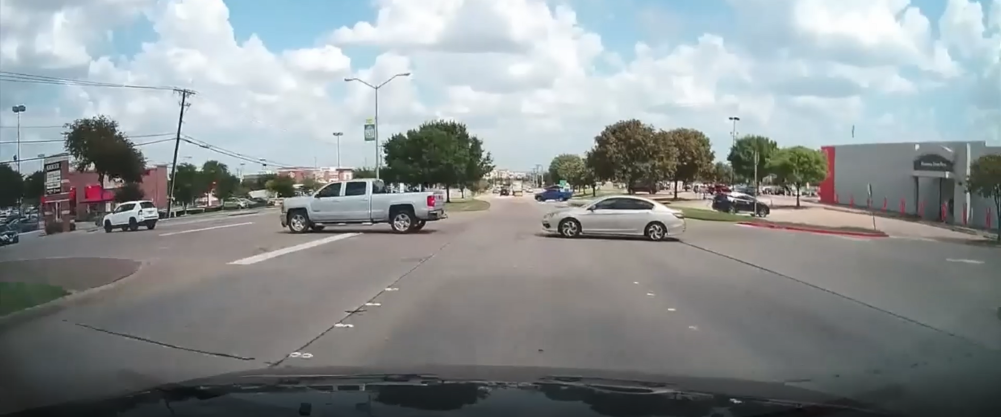
DANGERS > INTERSECTION > BLOCKING
Blocking
💡 Tips:
? Questions:

💡 Tips on not blocking traffic
Choose the right parking spot: When parking, choose a spot that is large enough for your vehicle and is not blocking the flow of traffic. Avoid parking on narrow roads or in areas where your vehicle could obstruct other drivers. Don't park in no parking zones: Make sure you're not parking in "no parking" zones or areas where parking is prohibited. Look for signs indicating parking restrictions or consult local parking regulations. Use hazard lights appropriately: If you need to stop your vehicle for a brief period, use your hazard lights to indicate that you are not moving. However, do not use hazard lights to park your vehicle for an extended period, as this can be confusing to other drivers and can cause traffic congestion. Be aware of your surroundings: Pay attention to your surroundings and be aware of other drivers on the road. If you see traffic building up behind you, consider moving your vehicle to a safer location to allow traffic to flow freely. Avoid double parking: Double parking, which involves parking your vehicle parallel to another parked vehicle and blocking a lane of traffic, should be avoided at all times. If you need to stop briefly, pull over to a safe location and avoid blocking traffic.
? Is
blocking an intersection illegal?
Legal and Safety Considerations
Regulations : Most jurisdictions have specific traffic laws that prohibit blocking intersections. These laws are designed to ensure that intersections remain clear and traffic flows smoothly. Penalties : Drivers who block intersections can be subject to fines and penalties. Law enforcement officers may issue tickets for this violation.
Obstruction : Blocking an intersection can obstruct emergency vehicles, pedestrians, and other road users, creating hazardous conditions. Traffic Flow : It disrupts the normal flow of traffic, leading to gridlock and increased travel times.
Right-of-Way : Blocking an intersection often violates the right-of-way rules, which are designed to promote orderly and safe movement of vehicles and pedestrians.
Preventive Measures
Clear Path : Only enter an intersection if you are sure you can clear it without stopping. This means not proceeding if traffic ahead is backed up and prevents you from exiting the intersection. Be Patient : Wait for traffic to clear before proceeding, even if the traffic light is green.
Visibility : In some areas, intersections may be marked with yellow box junctions (crisscross yellow lines) indicating areas that must be kept clear. Enforcement : These markings help drivers identify where they should not stop, and enforcement cameras or officers may monitor these areas.
Obey Signals : Adhere to traffic signals and signs, including those specifically indicating not to block intersections. Yielding : Yield to pedestrians and oncoming traffic to ensure intersections remain clear and safe.
Conclusion
? What is gridlock?
Causes of Gridlock
Rush Hours : During peak times, the number of vehicles on the road can exceed the capacity of the road network. Special Events : Concerts, sports events, or other large gatherings can lead to sudden surges in traffic.
Intersection Blocking : When vehicles enter an intersection without a clear path to exit, they can obstruct cross traffic, leading to gridlock.
Signal Timing : Poorly timed traffic signals can cause delays and backups. Signal Failure : Malfunctioning traffic lights can contribute to confusion and congestion.
Crashes : Road accidents can block lanes and reduce the capacity of the road network. Breakdowns : Disabled vehicles can create bottlenecks.
Construction Zones : Lane closures and detours due to construction work can reduce road capacity and disrupt normal traffic flow. Maintenance Work : Routine maintenance activities can also contribute to congestion.
High Activity : Areas with heavy pedestrian and cyclist traffic can slow vehicle movement, especially if crosswalks and bike lanes intersect with busy roads.
Effects of Gridlock
Extended Commutes : Gridlock significantly increases travel times, affecting commuters and commercial transport. Unpredictable Travel : It becomes difficult to predict travel times, leading to scheduling challenges.
Productivity Loss : Time spent in traffic can lead to lost productivity for businesses and individuals. Increased Costs : Fuel consumption and vehicle wear and tear increase during prolonged periods of idling in traffic.
Emissions : Increased idling and stop-and-go traffic lead to higher emissions of pollutants and greenhouse gases.
Stress : Prolonged exposure to traffic congestion can lead to increased stress and frustration among drivers. Health : Air pollution and sedentary time in vehicles can have adverse health effects.
Mitigating Gridlock
Signal Coordination : Synchronizing traffic lights to optimize flow can reduce stop-and-go traffic. Real-Time Monitoring : Using traffic cameras and sensors to monitor and manage traffic conditions dynamically.
Enhancing Services : Improving the availability, reliability, and convenience of public transportation can reduce the number of vehicles on the road. Incentives : Offering incentives for using public transport can encourage people to leave their cars at home.
Road Expansions : Adding lanes or building new roads to increase capacity. Bypasses and Ring Roads : Constructing bypasses and ring roads to divert through-traffic away from congested areas.
Congestion Pricing : Charging drivers for entering high-traffic areas during peak times to discourage unnecessary trips. Carpooling Incentives : Encouraging carpooling and ride-sharing to reduce the number of vehicles.
Mixed-Use Development : Designing cities to have residential, commercial, and recreational spaces close to each other to reduce the need for long commutes. Non-Motorized Transport : Promoting walking and cycling through dedicated infrastructure.